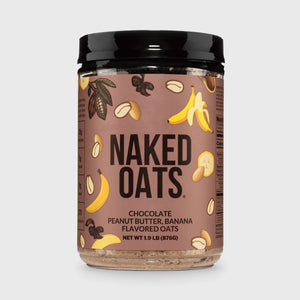
The fitness industry is a huge market that continues to grow each year. It’s evolved from gym rats pumping heavy iron and spending hours on exercise bikes to new training methods and wellness tactics. Training styles like functional training, indoor cycling, mixed martial arts, and yoga have risen in popularity and helped boutique studios and specialized gyms bring in new members.
In fact, the fitness industry has moved into the lifestyle market. Many gyms today are actually wellness centers that have the equipment, classes, and amenities for the whole family.
However, this doesn’t mean that everyone is partaking in the fitness lifestyle. There are still some larger health concerns both in the U.S. and worldwide. Let's look at some of the most important fitness statistics of the past few years and how they are helping shape our future.
Industry Statistics
We're becoming more health-conscious thanks to the rise of workplace wellness programs, fitness trends, and rising health concerns. The once niche market has become all-inclusive, allowing gym-goers of all ages and experience levels to find their place. This is helping aid to the boom of the fitness industry.
-
In 2019, the fitness industry generated $96.7 billion worldwide from franchise gyms, studios, supplement sales, and other ancillary products. [IHRSA]
-
The International Health, Racquetball & Sportsclub Association (IHRSA) reported that as of January 2019, an estimated 64.2 million Americans belong to one of the 41,370 fitness clubs across the country. [IHRSA]
-
The rising popularity of diet apps, nutrition trends, and medically supervised diets helped the weight loss industry generate $72 billion in 2019. [RM]
-
Research and Markets predicts that the rowing machine market will increase to $1,090.658 million by the end of 2025. [RM]
-
In 2019, the home fitness equipment market generated $11.5 billion. By 2026, it’s estimated to grow to $15.2 billion. [RM]
-
According to the Global Wellness Institute’s most recent study, roughly $109 billion was spent on fitness equipment and supplies by consumers in 2019 globally. This doesn’t include any government or public sector expenditures. [GWI]
-
In North America alone, the average person spent over $1,300 in 2018 on participation in physical activity (which includes a mix of technology, clothing, equipment, and other supplies.) [GWI]
- In 2018, an estimated 3.7 percent of the world’s population was a member of a gym or fitness club, took classes regularly, or worked out either on their own or in public facilities. [GWI]
Health-related Statistics
Health and fitness have been a topic of discussion in American culture for quite some time. If you're old enough to remember the 90s, you may recall that Arnold Schwarzenegger was the chairman of the President's Council on Sports, Fitness and Nutrition (PCSFN), where he helped motivate Americans to get active and stay healthy.
In the 2000s, we've seen alternative fitness trends like spinning, circuit training, CrossFit and obstacle course races inspire people to start working out.

-
By 2030, an estimated that nearly half of adults will be obese. [New England Journal of Medicine]
-
According to the America’s Health Rankings Annual Report, obesity has increased among adults by 166 percent in the past 30 years. [AHRAR]
-
Cardiovascular disease deaths in 2019 increased 4 percent from 2015, marking the fourth year in a row that deaths have increased. [AHRAR]
-
Since 2008, the percentage of adults meeting the Physical Activity Guidelines for Americans has increased from 28.4 percent to 37.4 percent. [CDC]
-
As of 2018, only about 54 percent of adults met the minimum requirements set in the 2008 Physical Activity Guidelines for Americans. [CDC]
-
In 2018, just over a quarter of adults engaged in no leisure-time physical activity. [CDC]
-
According to the CDC, one person dies every 37 seconds from cardiovascular disease. [CDC]
-
The World Health Organization (WHO) states that those who are not sufficiently physically active have a 20–30 percent increased risk of dying when compared to those who are physically active for at least 150 minutes each week. [WHO]
-
Studies have shown that coronary artery disease (CAD) accounts for 610,000 deaths each year and is the leading cause of death in the United States. [NCBI]
- The WHO recommends that older adults 65 years and older should perform at least 150 minutes of moderate-intensity aerobic physical activity a week. [WHO]

-
A recent social science journal surveyed current and former CrossFit athletes and found the most common injuries suffered in the sport are to the back (32.2 percent) and shoulders (20.7 percent). [SJ]
- According to the most recent data from the Consumer Product Safety Commission and the National Safety Council, exercise (and exercise equipment) is the leading cause of injuries with almost 500,000 in 2018. Basketball was second at 435,452 and bicycles were third at 424,346. [NSC]
Gender Statistics
Everyone exercises for different reasons, and when it comes to the gender breakdown, there are lots of things to consider. From activity levels and participation to results, we’ve compiled the most notable stats.
-
BLS reported in 2019 that men spent an average of 1.91 hours participating in sports, exercise and recreation every day, compared to women, who spent 1.26 hours performing the same activities. [BLS]
-
About half (54 percent) of men work out three times per week or more according to MINDBODY Fitness Trends in America 2020 Report. Just 43 percent of women report working out the same amount. [MINDBODY]
-
Lancet Global health conducted an international study of 1.9 million people across 168 countries and found that women experienced insufficient physical activity compared to men. [LGH]
-
A National Health Statistics Report found that with adults ages 18 to 64, 27.2 percent of men and 18.7 percent of women met the Federal Government's 2008 Guidelines for aerobic and muscle-strengthening activities. [NHSR]
- A review on obesity reported that women are more likely to encounter weight stigmas than men. [OR]

-
A research report by Dr. Stephanie E. Coen found that unspoken social boundaries like gender performance and relations are more likely to keep women from working out at the gym than compared to men. [QU]
-
In 2018, USA Weightlifting reported a record number of women participants making up 47 percent of its membership. [USAW]
-
The National Federation of State High School Associations (NFHS) found that in the 2018 to 2019 school year, the most participated boy’s high school sports were football (1,006,013), outdoor track and field (605,354) and basketball (540,769). [NFHS]
-
Outdoor track and field was ranked as the most popular sport among high school girls with 488,267 participants, followed by volleyball (452,808) and basketball (399,067) in 2019. [NFHS]
- Unified sports have increased in popularity in high schools across the country with 2,938 participants. [NFH]
Adolescent Fitness Statistics
When kids aren’t in school, they’re spending increasingly more time with their faces in front of screens — getting them outside and exercising can be a challenge. Both national and international data present a picture of waning interest or insufficient time spent participating in physical activities.
-
In the most recent global survey conducted on adolescents (ages 11–17) from 146 countries, 80 percent did not meet the recommendations of at least one hour of physical activity each day. [WHO]
- Similarly, according to the CDC and National Survey of Children’s Health, only 24 percent of kids in the U.S. (ages 6–17) participate in 60 minutes of physical activity daily. [NSCH]

-
The Philippines had the highest prevalence of adolescent boys (93 percent) with insufficient physical activity in the most recent global study. South Korea saw the highest prevalence with girls (97percent). Bangladesh had the lowest rates for boys, girls and both genders combined (63 percent, 69 percent and 66 percent, respectively). [WHO]
- National Federation of State High School Associations (NFHS) participation in high school sports declined by 43,395 in 2018–19 (7,937,491), compared to 2017–18 (7,980,886). [NFHS]
National Fitness Statistics
Different trends across the United States show how unique each state and region truly is. From biking to weight lifting, everyone has their own unique hobbies and interests.
-
The United Health Foundation's 2019 Annual Health Report ranked Arkansas (48), Louisiana (49) and Mississippi (50) as the least healthy states [UHF]
-
Los Angeles, California reported working out the most with 87 percent of residents working out at least once per week. Tulsa, Oklahoma residents reported the lowest percentage of residents working out once per week at 61 percent. [MINDBODY]
-
According to the MINDBODY Fitness Trends in America Report in 2020, Americans say that they work out 2.6 times per week on average. [MINDBODY]
-
In the 2019 MINDBODY Wellness Index Report, yoga is the top exercise for those who exercise at least once per week in a group. Walking is the top exercise for those who exercise at least once per week individually. [MINDBODY]
-
Miami, Florida has the highest percentage of residents (52%) that are satisfied or very satisfied with their fitness level. The lowest reported percentages of satisfaction came from Oklahoma City, Oklahoma (21%). [MINDBODY]
- The League of American Bicyclists voted Washington as the most bike-friendly state in America, compared to Nebraska (ranked #49). [Bicycle League]

-
The NCAA reported that there are an estimated 46,000 student-athletes in the United States.
-
The Bureau of Labor Statistics noted that in 2019, 28,600 athletic trainers were employed in the United States. [BLS]
- In 2019, the top-paying states for personal trainers were District of Columbia ($68,400), Hawaii ($62,610) and Connecticut ($60,930). [BLS]
International Fitness Statistics
Looking globally, health concerns and fitness trends are affected by everything from geography and climate to GDP levels. The differences compared to the United States help put into perspective the fitness challenges that we face globally.
- Looking at the most recent Global Wellness Institute report, the United States and China are the top two national consumer markets for recreational physical activity at $264.6 billion and $109.3 billion respectively. The next closest country is Japan at $43.9 billion.
-
According to WHO, the Americas and the Eastern Mediterranean have the highest rates of inactivity. [WHO]
-
WHO compared high-income to low-income countries and found that fitness was twice as popular in high-income countries than low-income countries. [WHO]
- As of 2019, the Bloomberg Healthiest Country Index ranked Spain as the most physically fit country, followed by Italy and Iceland. The United States ranks 35th. [Bloomberg]

-
In 2018, the United Kingdom and Germany had the largest fitness markets in Europe, generating €5.3 billion each. [Deloitte]
- Germany (11.1 million) was ranked number one in 2018 for having the most fitness memberships in Europe, beating out the UK (9.9 million), and France (6 million). [Deloitte]
Fitness Trends During COVID
Gyms and fitness studios nationwide have been slowly opening as of late May and early June. Uncertainty of new gym protocols and coronavirus spikes have kept many people sticking to home workouts.
In fact, Gold's Gym recently filed for Chapter 11 bankruptcy, closing 30 gyms and leaving only 700 open worldwide. 24 Hour Fitness followed suit, also filing Chapter 11 bankruptcy a few weeks later.

-
7.6 million Apple Watches were shipped worldwide in Q1 2020. [SA]
- Global smartwatch shipments grew 20 percent annually from 11.4 million units in Q1 2019 to 13.7 million in Q1 2020. [SA]
With the future outlooks unknown for both the coronavirus and gyms closures, it's crucial to stay active and safe. The fitness industry is evolving in a new direction and we're along for the ride. Remember that during stressful times, there are also many mental health benefits of exercise.
At this point, you're probably missing your gym buddy, but for now, fitness apps, online training programs and home equipment will have to keep us appeased. Stay powered through your next workout with protein powders or these chocolate chip protein cookies.
Related posts:
Women's Workout: How to Get Toned













